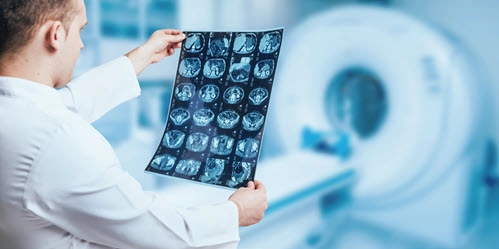Strengthen Your Diagnosis Coding Skills for Common Oncology and Hematology Procedures
Learn what code to report for neoplasm related pain. Are you getting ready to take a certification exam, or want to brush up on your ICD-10-CM coding skills? Chapters 2, 3 and 4 of the ICD-10-CM manual provide directions on reporting neoplasms, diseases of the blood and blood-forming organs, and endocrine and metabolic diseases — and if you’re not following them, then you could be facing a denial. Follow these 5 tips for reporting these conditions, and you’ll guarantee claim success. Tip 1: Primary Site and Behavior Drive Neoplasm Code Choices ICD-10-CM Chapter 2, Neoplasms, contains numerous broad groups of neoplasms, whether functionally active or not. Check the medical chart documentation to help you determine the primary site and nature of the neoplasm. When functionally active, you can use additional codes from Chapter 4 – Endocrine, Nutritional and Metabolic Diseases (E00 – E89), to identify the activity associated with the neoplasm. The morphology contained in Chapter 2 classifies neoplasms primarily by site, with groupings for behavior (malignant, in situ, benign, etc.). Heads up: Two key points to remember are: Tip 2: Tackle These Neoplasm Related Issues First, check out how to report dehydration in patients with carcinoma related concerns. Official Coding Guideline I.C.2.c.3 mandates if a malignancy results in dehydration, and the dehydration is being managed in your oncology practice, you should consider the admission/encounter as management of dehydration followed by the codes for the malignancy diagnosis. What to document: Oncologists need to document dehydration when applicable to the treatment and condition and avoid the less specific codes involving NEC (Not elsewhere classified) descriptors. When sequencing dehydration resulting from malignancy, the dehydration needs to be sequenced first, followed by the code(s) for the malignancy. A note located under code E86.0 (Dehydration) indicates additional code(s) for any associated disorders of electrolyte and acid-base balance (E87.0-) that are due to the dehydration must be coded as secondary diagnosis code(s). Next, check out how to code neoplastic related pain. If an admission/encounter is for a neoplasm-related pain, this circumstance should be specified by the oncologist as well. Similar to the above concept, Official Coding Guideline I.C.6.3.5 indicates code G89.3 (Neoplasm related pain (acute) (chronic)) should be assigned to pain documented as being related, associated or due to cancer, primary or secondary malignancy, or tumor. You will assign this code regardless of whether the pain is acute or chronic. The code may be assigned as the principal or first-listed code when the stated reason for the admission/encounter is documented as pain control/pain management. The underlying neoplasm should be reported as an additional diagnosis when the sole purpose of the encounter is for pain control/pain management. Tip 3: Check Out Neoplasm of Digestive Organs You will find malignant neoplasms of the liver (C22) included in the malignant neoplasm of digestive organs section (C15-C26). Keep in mind: The diagnosis code for a liver neoplasm excludes: Additional information: As can be common to oncology, many category codes will require the assignment of secondary diagnosis codes to completely describe a patient’s condition. The “code also” note located under category code C22 specifies a code from F10.- must be assigned. The “code also” note under category code C22 mandates a code from B16.-, B18.0-B18.1 should also be assigned to describe any associated hepatitis B; and/or a code from B17.1-, B18.2 to describe any associated hepatitis C infection. Remember, liver includes liver cell carcinoma, intrahepatic bile duct carcinoma and hepatoblastoma, angiosarcoma of liver. Be Aware: Many of the diagnoses from categories C15-C26 require an additional 4th digit in order for the code to be valid. Tip 4: Common ED Hemorrhage Presentations Require More Specific Codes You must specify hemorrhagic conditions (D69) using codes from Chapter 3, Diseases of the Blood and Blood-forming Organs and Certain Disorders Involving the Immune Mechanism, which includes codes from D50-D89. This chapter includes conditions common to the emergency department and associated with purpura and other hemorrhagic conditions. Watch the terminology. ICD-10-CM includes purpura and other hemorrhagic conditions like: Tip 5: Don’t Forget to Follow Up Active Neoplasm Codes with a Chapter 4 Diagnosis Chapter 4. Endocrine, Nutritional and Metabolic Diseases (E00-E89) does not contain neoplasms classified in Chapter 2. Rather, codes in this chapter are used as additional codes to indicate either functional activity by neoplasms and ectopic endocrine tissue or hyperfunction and hypofunction of endocrine glands associated with neoplasms and other conditions classified elsewhere. What to look for: Conditions common to oncology contained in this section are diabetes mellitus with additional classifications for disorders of glucose regulation and pancreatic internal secretions, disorders of other endocrine glands, malnutrition, other nutritional deficiencies, overweight, obesity and other hyperalimentation and metabolic disorders. How to code: For diabetes mellitus, code first the neoplasm, followed by the underlying diabetic manifestation. Suppose a patient has diabetes mellitus due to a primary malignant neoplasm of the head of pancreas, causing the patient to be insulin dependent. Sequencing guidelines mandate using the primary diagnosis code C25.0 (Malignant neoplasm of head of pancreas) for the malignant neoplasm, followed by E08.9 (Diabetes mellitus due to underlying condition without complications). Official Coding Guideline I.C.4.a.3 indicates an additional code should be assigned from category Z79.- (Long term (current) drug therapy) to identify the long-term (current) use of insulin or oral hypoglycemic drugs. If the physician states “chronic kidney disease” as a complication, it will be necessary to identify the stage of chronic disease: A patient with a malignant neoplasm of the left kidney and diabetes mellitus is now in end-stage renal failure and requires dialysis. Sequencing guidance is as follows:


